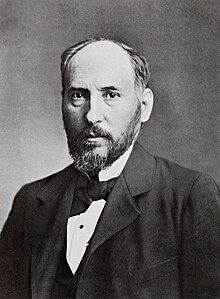
Back عالم أعصاب Arabic স্নায়ুবিজ্ঞানী Bengali/Bangla Neurowissenschaftler German عصبپژوه Persian Neurobiologiste French Ahli ilmu saraf ID ნეირომეცნიერი Georgian د اعصابو متخصص Pashto/Pushto Neurocientista Portuguese Neuroforskare Swedish

A neuroscientist (or neurobiologist) is a scientist specializing in neuroscience that deals with the anatomy and function of neurons, neural circuits, and glial cells, and their behavioral, biological, and psychological roles in health and disease.[1]

Neuroscientists generally work as researchers within a college, university, government agency, or private industry setting.[2] In research-oriented careers, neuroscientists design and conduct scientific experiments on the nervous system and its functions. They can engage in basic or applied research. Basic research seeks to expand current understanding of the nervous system, whereas applied research seeks to address a specific problem, such as developing a treatment for a neurological disorder.
Neuroscientists have numerous career opportunities outside of academic research, including careers in industry, science writing, government program management, science advocacy, and education.[3] A neuroscientist commonly holds a doctorate in a medical science.
- ^ "About Neuroscience". National Institute of Child Health and Human Development, US National Institutes of Health. 2024. Retrieved 11 December 2024.
- ^ "Neuroscience Jobs Available in a Variety of Industries". Archived from the original on 2015-03-10. Retrieved 2015-03-12.
- ^ "Careers". Archived from the original on 2015-04-08. Retrieved 2015-04-22.